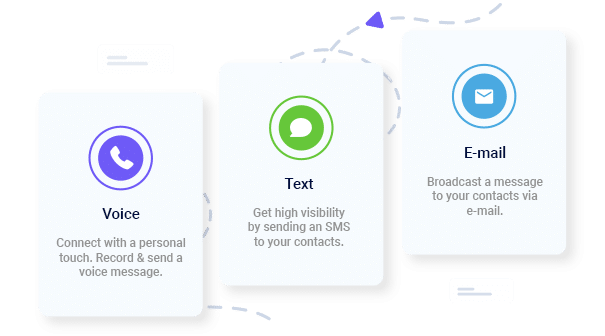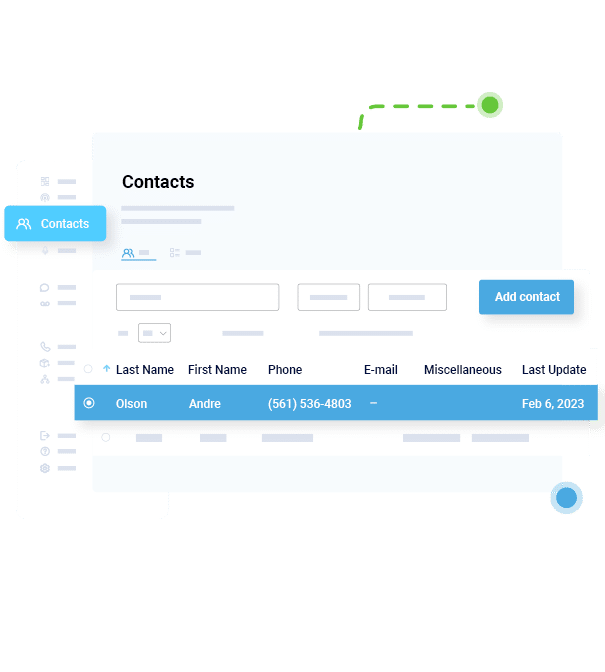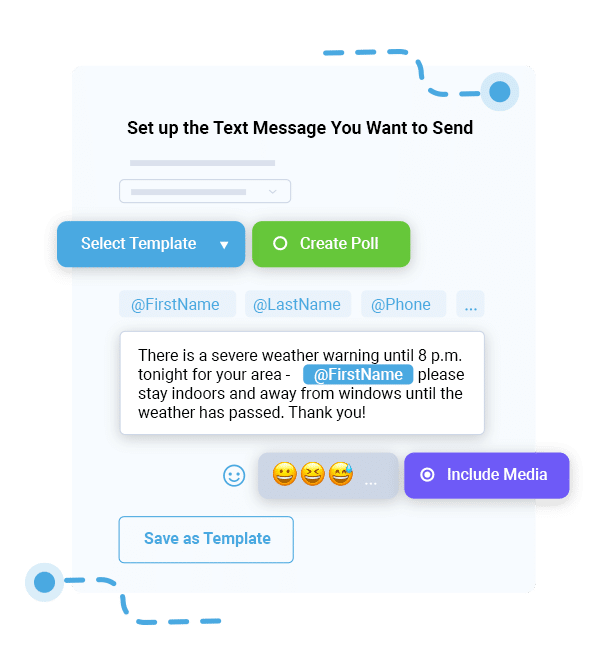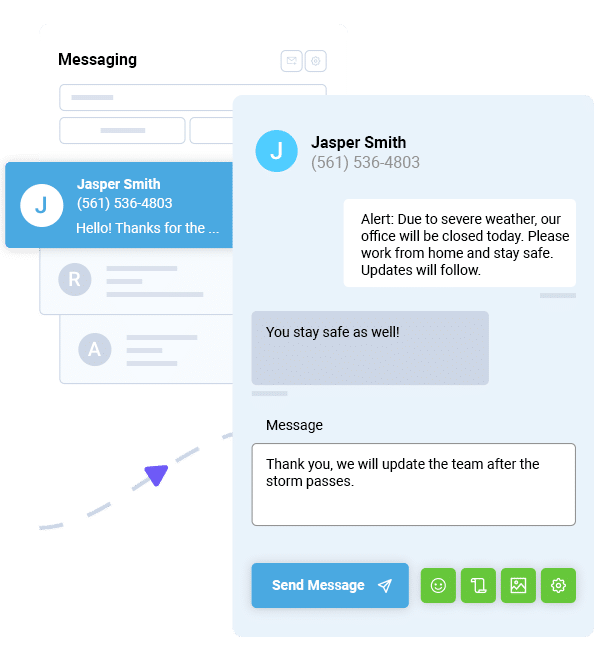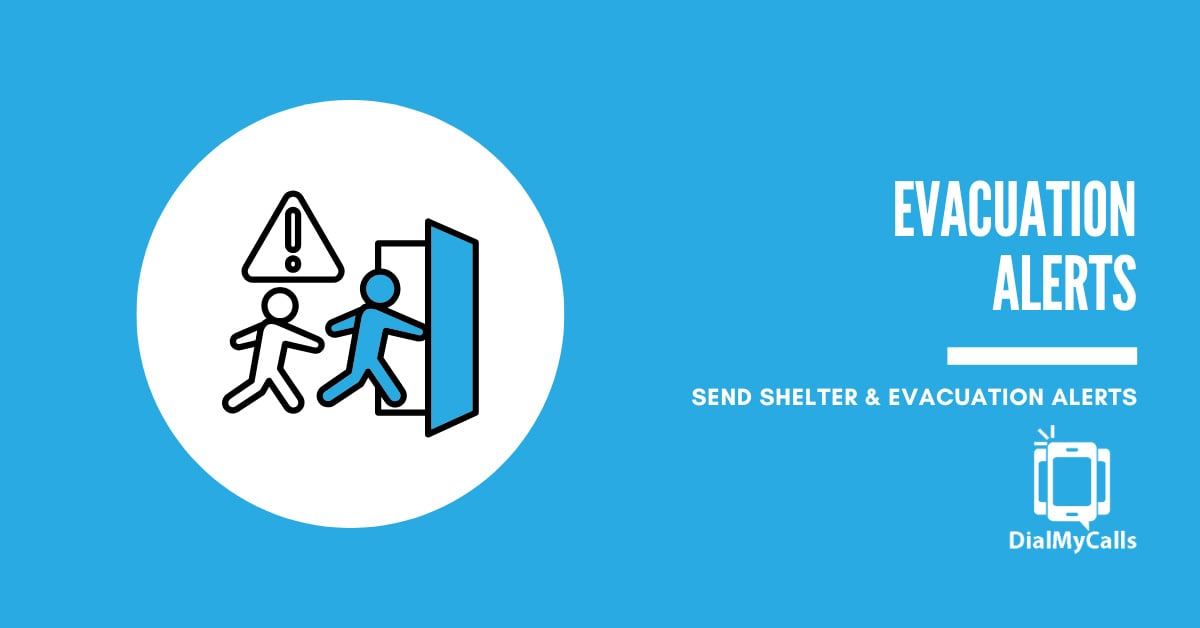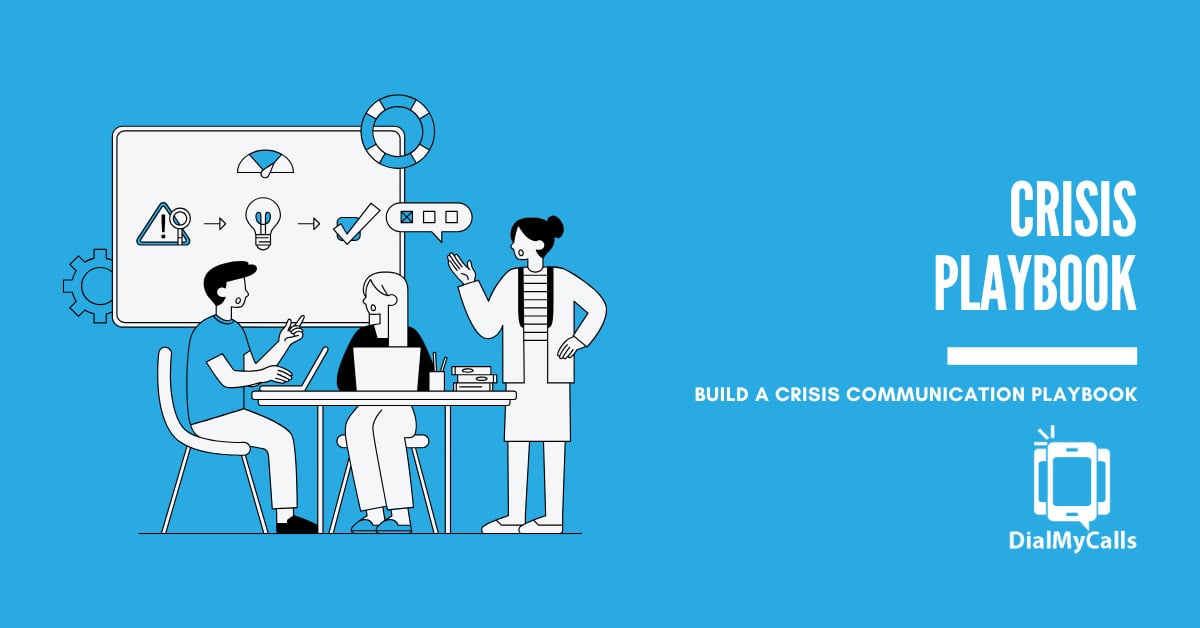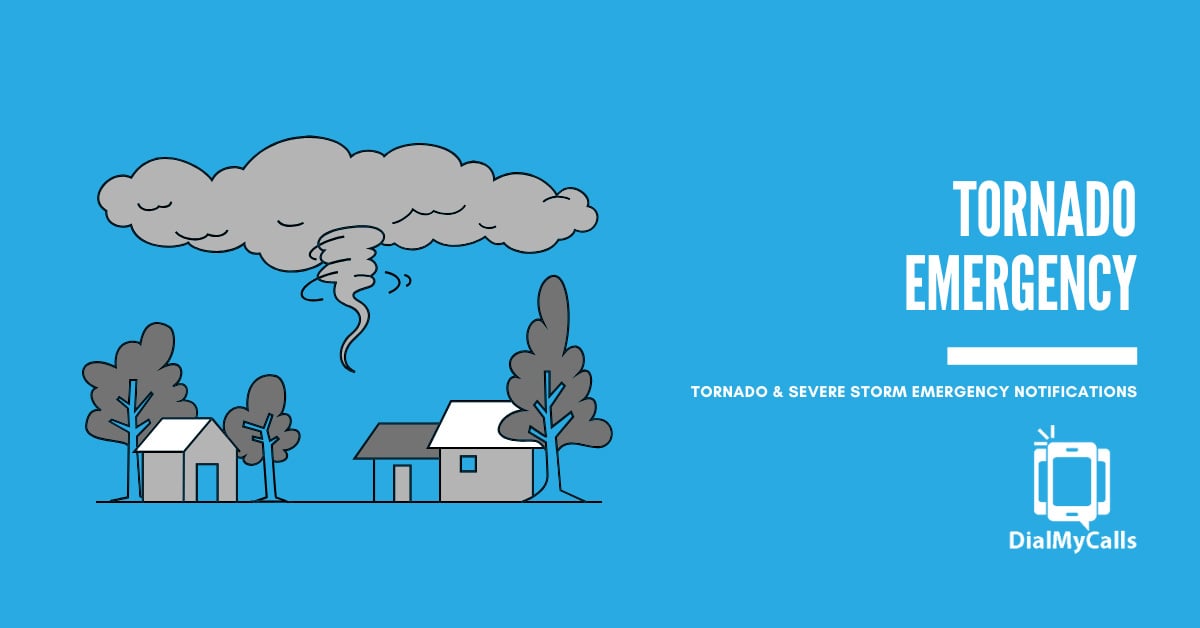13 Best Practices for Sending Emergency Alerts in Residential Communities
Posted by Tim Smith in Emergency Notification on September 2, 2025
Updated on August 29, 2025
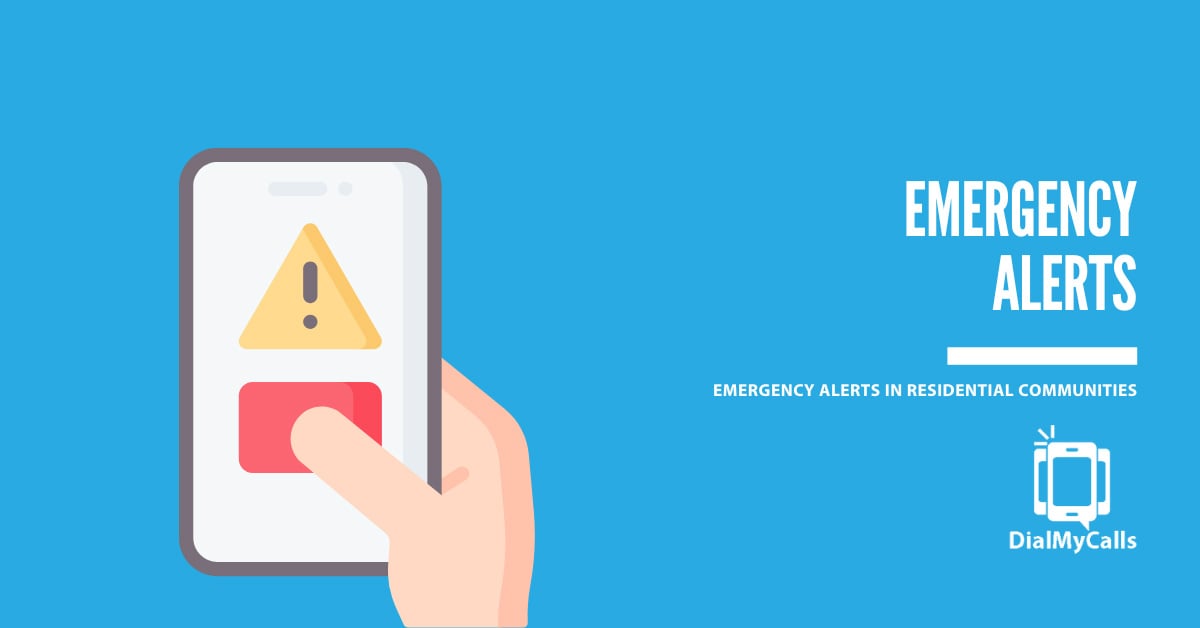
To send effective emergency alerts in residential communities, use a multi-channel system with SMS, voice, and email. Keep contact lists updated, use pre-written templates, and target only affected areas. Send alerts immediately, keep messages clear and actionable, and regularly test your system to ensure reliability.
Why Emergency Alerts Matter for Residential Communities
When a fire breaks out, a storm knocks out power, or there’s a gas leak in one building, seconds matter. Fast, reliable alerts can prevent injuries, protect property, and save lives.
Recent years have shown just how critical emergency communication is, from hurricanes to wildfires to local lockdowns. If you manage a residential property or community, it’s your responsibility to keep residents informed.
Instant Communication, Whenever You Need It
Send Real-Time SMS & Voice Call Alerts from Anywhere
That’s where tools like DialMyCalls come in. With the ability to send SMS, voice, and email alerts simultaneously, you can make sure your message gets through no matter where residents are or what device they use.
Let’s look at the 13 best practices to follow when building your emergency notification strategy.
1. Establish a Multi-Channel Alert System
Not everyone checks email in an emergency. Some residents may only see a text message. Others may prefer a phone call, especially seniors or visually impaired individuals.
That’s why using multiple communication channels is essential. An effective system should:
- Send SMS for speed and visibility
- Include voice calls for accessibility
- Follow up with an email for full message details
With DialMyCalls’ multi-modal platform, you can send all three from a single dashboard, ensuring everyone is covered.
2. Keep Contact Lists Updated
An emergency alert is only helpful if it reaches the right people.
To keep your contact database accurate:
- Request updated resident info every quarter
- Make mobile numbers optional but encouraged
- Get explicit opt-in consent for text messages (per FCC guidelines)
- Allow residents to update their info via online portals or paper forms
DialMyCalls makes it easy to upload contacts by CSV or integrate with property management systems, so you’re never relying on outdated data.
3. Use Message Templates for Speed and Accuracy
During a crisis, every second counts, and panic can lead to mistakes. That’s why message templates are so valuable.
Create clear, pre-approved scripts for common scenarios like:
- Fire evacuation notices
- Severe weather warnings
- Gas leak alerts
- Missing child or safety threats
Save these directly in your DialMyCalls dashboard so they’re ready to send in seconds. You can always customize before sending if needed.
4. Send Location or Building-Specific Alerts
If a water main breaks in Building A, the entire neighborhood doesn’t need an alert.
Segment your contact lists based on:
- Property type (e.g., condo, apartment, townhome)
- Specific buildings or floors
- Zones or streets in the community
DialMyCalls supports custom contact groups, allowing you to send hyper-targeted alerts without spamming the whole community.
5. Time Matters—Send Alerts Instantly
In a true emergency, delays can be dangerous. That’s why SMS and voice are faster and more effective than email-only alerts.
Use a platform that:
- Sends messages within seconds
- Allows retries on failed SMS or calls
- Schedules follow-up alerts at intervals
With DialMyCalls, you can trigger alerts immediately and automate follow-ups if the situation evolves.
6. Maintain Message Clarity and Simplicity
When people are panicking, they don’t want a long-winded update. They need clear, actionable information.
Stick to the basics:
- What’s happening
- Who is affected
- What action to take
- When and where to go (if relevant)
Example alert:
“Emergency in Building B. Evacuate immediately via the east stairwell. Fire department en route.”
Avoid technical jargon or long introductions. Prioritize simplicity over formality.
Mass Texting, Made Easy
Send Bulk Text Message Campaigns in Seconds
7. Practice with Test Alerts and Drills
The best systems are only effective if everyone knows how to use them.
Schedule quarterly test alerts to:
- Ensure delivery to all opted-in contacts
- Train staff on sending emergency messages
- Check failover systems and message speed
- Evaluate response protocols
After each test, collect feedback and make necessary adjustments. This builds confidence and prepares your team to act decisively during a real emergency.
8. Designate a Communication Lead or Response Team
Even with the right tools in place, you need a human system behind the system. Assign one or more individuals, such as a property manager, HOA board member, or emergency coordinator, to be responsible for managing alerts. During emergencies, this person (or team) should be ready to:
- Trigger alerts quickly and accurately
- Coordinate follow-up messaging
- Respond to resident replies or questions
Having a clear chain of command reduces confusion and ensures faster decision-making.
9. Enable Two-Way Messaging for Resident Response
Emergencies don’t just require outbound communication. They demand feedback. Two-way SMS lets residents respond to alerts with helpful updates or questions, such as:
- “I’m stuck in the garage. Can someone assist?”
- “There’s visible flooding by the back entrance.”
This can provide real-time situational awareness and allow for more tailored follow-ups. Platforms like DialMyCalls 2-Way SMS enable this interaction while keeping records centralized and auditable.
10. Create Communication Plans for Different Emergency Types
Not all emergencies are the same. A fire alert requires very different messaging than a missing pet notice or a utility outage. Preplanning response templates and protocols by emergency type (e.g., fire, flood, gas leak, active intruder, missing person) can:
- Speed up alert deployment
- Ensure consistency and accuracy
- Reduce panic-induced errors
Store these templates in your messaging dashboard for quick access and updates.
11. Translate Alerts for Multilingual Communities
If your community includes non-English speakers, consider offering emergency alerts in multiple languages. Even brief, clear translations can:
- Increase safety for more residents
- Build community trust and inclusion
- Reduce confusion during high-stress moments
With DialMyCalls, you can create multilingual contact groups and send translated messages where needed.
12. Log and Analyze Past Alerts for Future Improvement
After any emergency or drill, review your messaging performance:
- How fast did the alert go out?
- Did all residents receive it?
- Were there any failed deliveries or confusion?
Track metrics like delivery rates, resident responses, and timing. These insights help refine your process and identify areas for improvement.
13. Promote Alert Opt-In During Move-In and Resident Events
One of the biggest barriers to effective alerts is incomplete contact data. Make alert opt-ins part of your new resident onboarding, lease agreements, or HOA welcome packets. You can also:
- Promote signups during community meetings or newsletters
- Provide QR codes or links to SMS keyword opt-ins (e.g., “Text JOINHOA to 80123”)
A proactive approach keeps your database healthy and your reach wide.
Conclusion: Build a Safer, More Connected Community
Emergency communication isn’t optional. It must be a key part of your residential safety plan. When disaster strikes, your residents rely on you for fast, clear, and reliable information.
By combining the following:
- Multi-channel outreach
- Clear messaging
- Updated contacts
- Segmented targeting
- And regular drills
You can build a notification workflow that works.
Want a platform built for this? DialMyCalls helps thousands of property managers and HOA boards send emergency alerts with ease. Try it free today.
Stay Connected with Mass Notifications
Create & Send a Broadcast to Thousands in Seconds
FAQs: Emergency Alerts for Residential Communities
What’s the best way to alert residents during an emergency?
The most effective method is to use a multi-channel system that includes SMS, voice calls, and email. This ensures that all residents, regardless of age, device, or location, receive the message quickly.
How fast are SMS alerts vs email in an emergency?
SMS is generally delivered within seconds and has a much higher open rate than email. Emails can take minutes to reach inboxes and are often missed, especially during off-hours.
What should be included in a community alert message?
Every emergency alert should include:
- What is happening
- Who does it affect
- What action to take
- When to act or expect updates
Can residents opt out of emergency alerts?
Yes, but it’s recommended to make emergency alerts opt-in by default with the option to opt out. Always follow FCC guidelines and local regulations for SMS consent.
Author
Tim Smith is the Media Manager at DialMyCalls, where he has leveraged his expertise in telecommunications, SaaS, SEO optimization, technical writing, and mass communication systems since 2011. Tim is a seasoned professional with over 12 years at DialMyCalls and 15+ years of online writing experience.
Try Using DialMyCalls Right Now
Start For Free
Recent Posts
- Essential SMS Alert Checklist for Parades, Rallies & Local Events
- How to Send Effective Shelter & Evacuation Text Alerts During Emergencies
- A Step-by-Step Guide to Building a Crisis Communication Playbook
- 6 Top Emergency Notification Challenges Schools Face and How to Solve Them
- 7 Best Practices for Tornado and Severe Storm Emergency Notifications
Categories
“I am a youth minister and have spent hours in the past calling students individually to remind them of an upcoming event or to get out an urgent announcement. With DialMyCalls.com, I cut that time down to about 1 minute. I also love how I can see exactly who answered live and how long they listened so I know if they heard the whole message. DialMyCalls.com is the best website I have stumbled upon all year! Thanks!”
Central Baptist Church
Try Using DialMyCalls Right Now
Start For Free
Author
Tim Smith is the Media Manager at DialMyCalls, where he has leveraged his expertise in telecommunications, SaaS, SEO optimization, technical writing, and mass communication systems since 2011. Tim is a seasoned professional with over 12 years at DialMyCalls and 15+ years of online writing experience.
Try Using DialMyCalls Right Now
Start For Free
Recent Posts
- Essential SMS Alert Checklist for Parades, Rallies & Local Events
- How to Send Effective Shelter & Evacuation Text Alerts During Emergencies
- A Step-by-Step Guide to Building a Crisis Communication Playbook
- 6 Top Emergency Notification Challenges Schools Face and How to Solve Them
- 7 Best Practices for Tornado and Severe Storm Emergency Notifications
Categories
“I am a youth minister and have spent hours in the past calling students individually to remind them of an upcoming event or to get out an urgent announcement. With DialMyCalls.com, I cut that time down to about 1 minute. I also love how I can see exactly who answered live and how long they listened so I know if they heard the whole message. DialMyCalls.com is the best website I have stumbled upon all year! Thanks!”
Central Baptist Church
Try Using DialMyCalls Right Now
Start For Free
